From persistent injuries, to advanced arthritis, to complex fractures and severe neuromuscular diseases, you can turn to Tufts Medicine for help when orthopedic problems cause you pain or prevent you from enjoying the activities you love.
Helping you move + feel better
If you’re living with significant pain and discomfort from an orthopedic (musculoskeletal) condition, you know firsthand how much it can affect your quality of life. Seemingly simple tasks like walking, climbing stairs or even standing become much more difficult. On a positive note, our bone, joint and muscle specialists are here to get you moving again.
Our team features some of the brightest minds in the field who perform tried-and-true treatments like physical therapy and the latest techniques like Mako SmartRobotics™.
We’re honored to be the partner you trust on the good days and the team you rely on during the challenging ones.
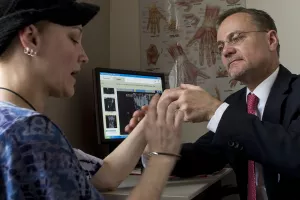
Community orthopedic + joint care
Our orthopedic surgeons and specialized clinical team provide a full array of minimally invasive procedures for bone, muscle and total joint replacement surgery. Recognized as a Blue Distinction Plus facility for Spine and Blue Distinction plus for Hip and Knee replacement by Blue Cross Blue Shield, our experienced team of orthopedic professionals will help you return to the activities you love.
We offer minimally invasive surgical and non-surgical interventions to help you manage or treat your joint or bone discomfort. Our team of board-certified orthopedic surgeons, specialty-trained nurses, technicians and radiologists will partner with you to understand your goals and get you moving again.
Whether it’s a complex fracture, sports injury, spinal deformity such as scoliosis or a neuromuscular disorder such as cerebral palsy, we have a talented team ready to help. We offer a full range of orthopedic and sports medicine specialties and programs, including pediatric orthopedics for our littlest patients.
Conditions
You know your body better than anyone, so when aches, pains or sprains make your life more challenging, it’s a good idea to seek help from specialists. At Tufts Medicine, you’ll have a care team of experts — orthopedic surgeons, physiatrists, physical therapists, anesthesiologists, neurologists, pain management specialists and radiologists — who can help you find relief when you’re living with the following conditions:
Testing
Whether you’ve been living with symptoms for a while or you’ve just started noticing muscle or bone pain, we can help pinpoint what’s ailing you. That process usually starts with a physical exam, and we often use the following tools to help us see the bigger picture of your condition:
- CT scan
- Fluoroscopy
- MRI
- Ultrasound
- X-ray
These tests help us look for things like:
- Arthritis
- Fractures
- Ligament sprains and tears
- Nerve damage
- Tumors
We also take a hands-on approach to diagnosing injuries with a procedure called arthroscopy. Arthroscopy involves making an incision roughly the size of a penny near the affected area to look at your joints, tendons and ligaments using a fiber-optic video camera attached to a narrow tube.
Treatments
Our experienced team of orthopedic specialists has years of expertise performing a variety of procedures, including:
- Arthroscopic surgery
- Bone fracture repair
- Bone fusion
- Cortisone treatment
- Debridement
- Foot and ankle surgery
- Hand and wrist surgery for carpal tunnel syndrome
- Knee ligament repair
- Labral tear repair
- Ligament repair
- MACI procedure
- Medication management
- Minimally invasive arthroscopic procedures
- Orthopedic surgery
- Osteotomy
- Revision joint surgery
- Rotator cuff tear repair
- Shoulder surgery
- Soft tissue repair
- Spinal fusion
- Spine care
- Surgical management of refractory trochanteric bursitis
- Total joint replacement
After we’ve diagnosed your orthopedic condition, we’ll design a treatment plan around your unique healthcare needs. We may recommend treatments ranging from lifestyle changes to bracing to physical therapy and surgery.
Our feet and ankles work hard for us every day, but we often take them for granted — until they hurt. You can count on us to help you take a step in the right direction toward better health.
From diagnosing an injury to healing, strength building and ongoing care, we’ll map a treatment path that’s uniquely you.
It’s easy to forget how much we rely on our hands and arms until everyday tasks like eating, cleaning and hugging become more of a chore than a natural movement. We provide specialized, compassionate care for people living with conditions affecting the arms, elbows, hands and wrists.
And if you’ve recently had surgery on this part of the body, we offer hand therapy to improve your strength and overall function following surgery.
When a young person has a hip disorder, we try to avoid hip replacement surgery whenever possible. While hip replacements offer a whole new outlook on movement, they do have their pros and cons.
It's important to know that hip replacements require lifelong upkeep (replacement every 10–15 years). That's why we'll first focus on preserving the hip before replacing it.
Almost every bone in the body is connected to a joint. Hip and knee joints in particular wear down over time, causing pain and limiting mobility. When that pain just won’t ease up, moving forward with a joint replacement may be your best option.
Every spine is different. We’ll work with you to create a personalized care plan for your unique conditions and lifestyle. From minimally-invasive surgical options for spinal trauma and deformities to non-surgical interventions, we’ll get you on the road to recovery as quickly as possible.
If you’ve suffered a serious injury, accident or bone infection (osteomyelitis), our orthopedic trauma team will work quickly to get you on the road to recovery.
You can trust in our podiatry team to diagnose, treat, prevent and rehabilitate musculoskeletal conditions affecting your feet and ankles. And should you be living with a biomechanical condition that takes a toll on your natural functions or an irritating dermatologic condition that makes it painful to walk, our podiatrists will help improve how you move with advanced foot and ankle care.
No one likes missing out on the action because of an injury, whether it be a playoff matchup or playtime with the kids. You can count on our team of sports medicine experts to use the latest techniques — including robotic-assisted surgery — to get you moving again.
Awards + accreditations
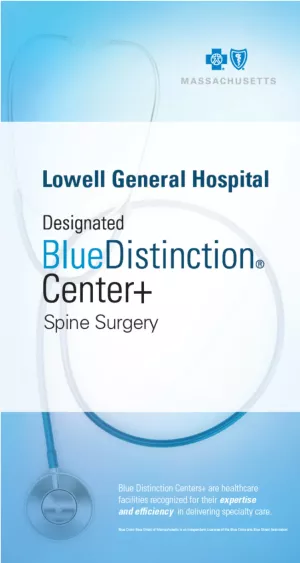
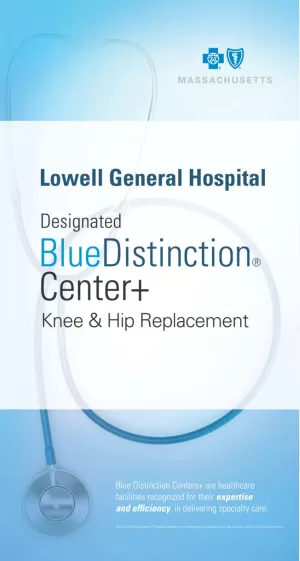

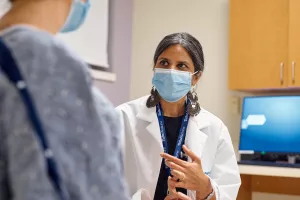
From regular office visits to inpatient stays, find the healthcare you need and deserve close to home.
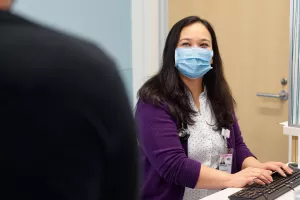
Meet the doctors and care team devoted to supporting you every step of the way along your path to better health.